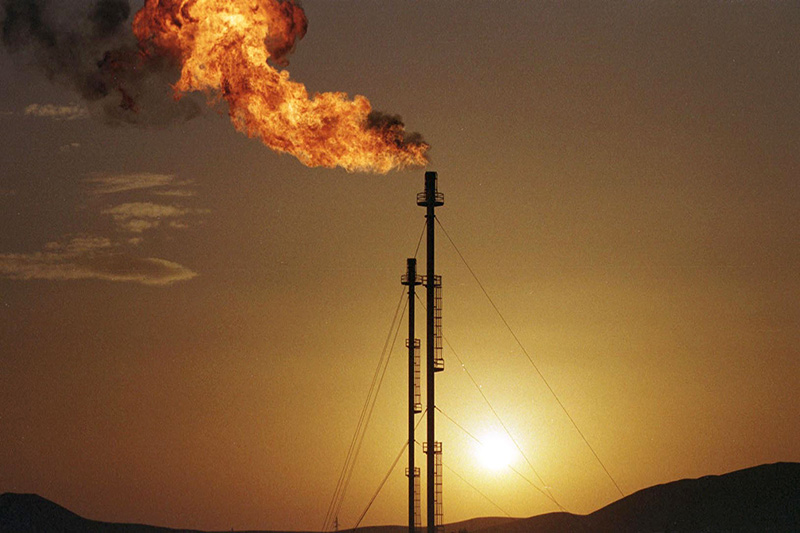Investing.com - Natural gas futures rose on Monday as unseasonably cold weather tightened its grip on the eastern U.S., sparking talk the U.S. winter that began on the warmer side may post a rather chilly exit.
On the New York Mercantile Exchange, natural gas futures for delivery in April traded at USD3.531 per million British thermal units, up 2.18%.
The commodity hit a session low of USD3.409 and a high of USD3.538.
Weather forecasting models predicted cold and wintry weather to stick around for much of the heavily populated central and eastern portions of the country for the remainder of the week, which pushed up natural gas prices.
A colder end to winter has cut into inventories.
The U.S. Energy Information Administration said in its weekly report released late last week that natural gas storage in the U.S. in the week ending Feb. 22 fell by 171 billion cubic feet compared to expectations for a drop of 167 billion cubic feet.
Inventories fell by 106 billion cubic feet in the same week a year earlier, while the five-year average change for the week is a decline of 118 billion cubic feet.
Total U.S. natural gas storage stood at 2.299 trillion cubic feet as of last week. Stocks were 307 billion cubic feet less than last year at this time and 308 billion cubic feet above the five-year average of 1.921 trillion cubic feet for this time of year.
The report showed that in the East Region, stocks were 71 billion cubic feet above the five-year average, following net withdrawals of 109 billion cubic feet.
Stocks in the Producing Region were 164 billion cubic feet above the five-year average of 711 billion cubic feet after a net withdrawal of 50 billion cubic feet.
Elsewhere on the NYMEX, light sweet crude oil futures for delivery in April were down 1.08% and trading at USD89.70 a barrel, while heating oil for April delivery were down 0.68% and trading at USD2.9100 per gallon.
On the New York Mercantile Exchange, natural gas futures for delivery in April traded at USD3.531 per million British thermal units, up 2.18%.
The commodity hit a session low of USD3.409 and a high of USD3.538.
Weather forecasting models predicted cold and wintry weather to stick around for much of the heavily populated central and eastern portions of the country for the remainder of the week, which pushed up natural gas prices.
A colder end to winter has cut into inventories.
The U.S. Energy Information Administration said in its weekly report released late last week that natural gas storage in the U.S. in the week ending Feb. 22 fell by 171 billion cubic feet compared to expectations for a drop of 167 billion cubic feet.
Inventories fell by 106 billion cubic feet in the same week a year earlier, while the five-year average change for the week is a decline of 118 billion cubic feet.
Total U.S. natural gas storage stood at 2.299 trillion cubic feet as of last week. Stocks were 307 billion cubic feet less than last year at this time and 308 billion cubic feet above the five-year average of 1.921 trillion cubic feet for this time of year.
The report showed that in the East Region, stocks were 71 billion cubic feet above the five-year average, following net withdrawals of 109 billion cubic feet.
Stocks in the Producing Region were 164 billion cubic feet above the five-year average of 711 billion cubic feet after a net withdrawal of 50 billion cubic feet.
Elsewhere on the NYMEX, light sweet crude oil futures for delivery in April were down 1.08% and trading at USD89.70 a barrel, while heating oil for April delivery were down 0.68% and trading at USD2.9100 per gallon.
